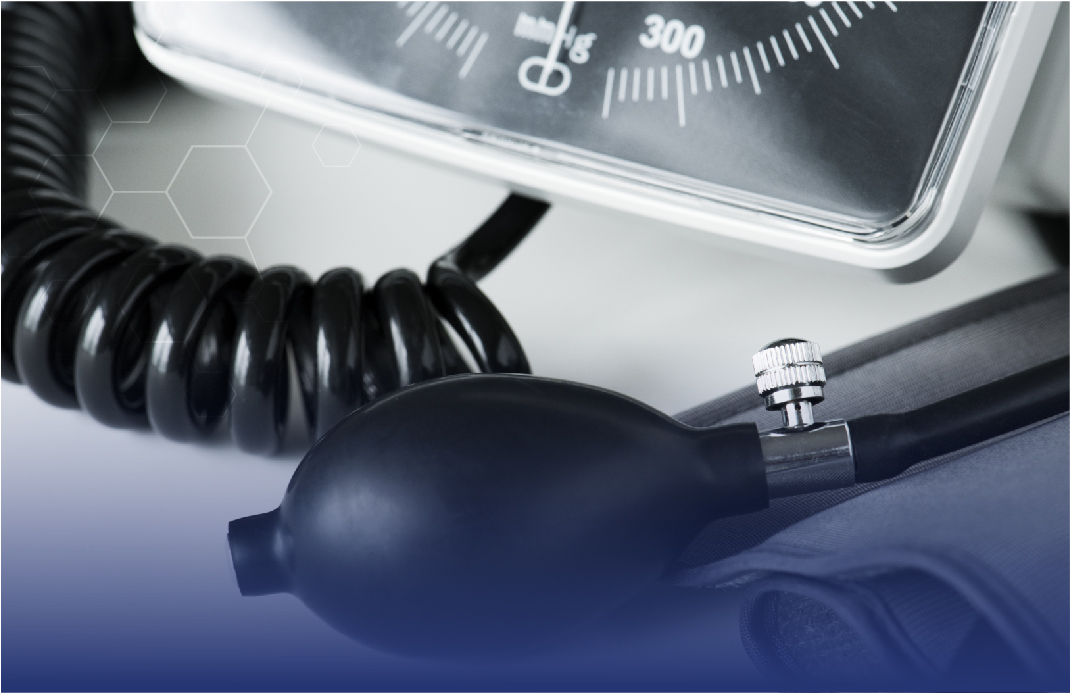عندما يُخبرك طبيبك أن ضغط دمك ١٤٠ على ٩٠، فماذا يعني ذلك فعليًا؟ إذا شُخِّصتَ حديثًا بارتفاع ضغط الدم - أو كنتَ تساعد أحد أحبائك على إدارته - فإن فهم كيفية قراءة هذه الأرقام وتفسيرها هو إحدى الخطوات الأولى للسيطرة على حالتك.
ما هو ضغط الدم؟
ضغط الدم هو الضغط، يقاس بالملليمتر الزئبقي، داخل الجهاز الشرياني الرئيسي للجسم. ويُقسّم عادةً إلى ضغط انقباضي وضغط انبساطي. يمثل هذان الرقمان مراحل مختلفة من ضربات القلب، ولكل منهما دلالة مختلفة على صحة القلب والأوعية الدموية. الضغط الانقباضي هو أقصى ضغط دم أثناء انقباض القلب؛ بينما الضغط الانبساطي هو أدنى ضغط يُسجَّل قبل الانقباضة التالية مباشرةً.
الضغط الانقباضي: الرقم الأعلى
ال الانقباضي لرقم هو الأعلى بين الرقمين، ويأتي أولاً في القراءة. يقيس الضغط في شرايينك. .عندما ينبض قلبك ويضخ الدم للخارجفكر في الأمر باعتباره أقصى ضغط يمارسه قلبك أثناء النشاط
- القراءة الانقباضية الطبيعية عادة ما تكون أقل من 120 ملم زئبق
- قراءات 130 ملم زئبق أو أعلى تعتبر مرتفعة أو عالية، اعتمادًا على النطاق
غالبًا ما يرتبط ارتفاع ضغط الدم الانقباضي ارتباطًا وثيقًا بمضاعفات مثل السكتة الدماغية والنوبة القلبية، وخاصةً عند كبار السن.
الضغط الانبساطي: الرقم السفلي
ال الانبساطي الرقم هو الرقم الأدنى ويتبع الضغط الانقباضي. يقيس الضغط في الشرايين. عندما يكون قلبك في حالة راحة بين النبضات.
- القراءة الانبساطية الطبيعية هي 80 ملم زئبق
- قراءة ل 90 ملم زئبق أو أكث يشير عادة إلى ارتفاع ضغط الدم
في حين أن ضغط الدم الانقباضي يميل إلى الحصول على مزيد من الاهتمام، فإن ارتفاع ضغط الدم الانبساطي - وخاصة عند الأشخاص الأصغر سنا - يمكن أن يكون علامة مبكرة على المخاطر طويلة الأمد.
لماذا كلا الرقمين مهمان
كلا الرقمين مهمان. لا يمكنك تجاهل أحدهما لمجرد أن الآخر يبدو طبيعيًا. على سبيل المثال:
- ارتفاع ضغط الدم الانقباضي المعزول (رقم علوي مرتفع، رقم سفلي طبيعي)
يمكن أن يحدث ارتفاع ضغط الدم الانقباضي المعزول بسبب حالات مثل:
- تصلب الشرايين.
- فرط نشاط الغدة الدرقية، ويسمى أيضًا فرط نشاط الغدة الدرقية.
- السكري.
- مرض صمام القلب.
- بدانة.
مع مرور الوقت، يمكن أن يؤدي ارتفاع ضغط الدم إلى زيادة خطر الإصابة بالسكتة الدماغية وأمراض القلب والخرف وأمراض الكلى المزمنة.
- ارتفاع ضغط الدم الانبساطي المعزول (رقم علوي عادي، رقم سفلي مرتفع) هذا أمر شائع في:
- متلازمة التمثيل الغذائي
- مرض الكلى المزمن
- مشاكل الغدة الدرقية
- انقطاع النفس النومي
وفي كلتا الحالتين، تزداد مخاطر الإصابة بأمراض القلب والسكتة الدماغية ومشاكل الكلى بمرور الوقت إذا لم تتم إدارتها بشكل صحيح.
وش يعتبر عادي، مرتفع، أو عالي؟
جمعية القلب الأمريكية يصنف قراءات ارتفاع ضغط الدم إلى الأنواع التالية
إذا كانت قراءاتك تندرج باستمرار ضمن الفئات المرتفعة أو العالية، فقد حان الوقت لاتخاذ الإجراء.
كيفية مراقبة ضغط الدم بشكل صحيح
- استخدم شاشة معتمدة- من الأفضل أن يكون هذا الجهاز عبارة عن سوار للذراع العلوي، وليس جهاز للمعصم.
- اجلس بهدوء لمدة خمس دقائق قبل إجراء القراءة.
- خذ قراءات متعددة ومتوسطهم للحصول على صورة أكثر دقة.
- تتبع نتائجك مع مرور الوقت، تمكنا من اكتشاف الأنماط.
التطبيقات والمنصات مثل توت ساعد المرضى على تسجيل قراءاتهم، واحصل على تنبيهات عند وجود أي خلل، وابقَ على اتصال دائم بفريق الرعاية الصحية. يُعدّ التتبع المستمر من أكثر الطرق فعالية لتجنب المضاعفات.
متى يجب عليك زيارة الطبيب
إذا لاحظتَ باستمرار قراءاتٍ أعلى من ١٣٠/٨٠، خاصةً مع أعراضٍ مثل الصداع، أو الدوخة، أو ألم الصدر، فلا تنتظر. استشر طبيبك. يُطلق على ارتفاع ضغط الدم عادةً اسم "القاتل الصامت" لأنه نادرًا ما تظهر أعراضه في مراحله المبكرة.
الخط السفلي
ضغط الدم ليس مجرد رقمين، بل هو مؤشر على مدى كفاءة قلبك في العمل وكفاءة أوعيتك الدموية في تحمل الضغط. إن فهم الفرق بين الضغط الانقباضي والانبساطي يساعدك على اتخاذ قرارات أفضل بشأن النظام الغذائي وممارسة الرياضة والأدوية ونمط الحياة.
وتذكر أن إدارة ارتفاع ضغط الدم لا يجب أن تكون مرهقة. أدوات مثل أجهزة المراقبة الذكية ونظام الرعاية القائم على الفريق من Blueberry نقدم حلاً كاملاً - من التتبع إلى العلاج - لمساعدتك على البقاء على رأس صحتك.



